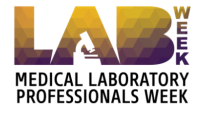Mixed Gliomas
Make an Appointment
Our team of dedicated access representatives is here to help you make an appointment with the specialists that you need.
Mixed gliomas are tumors made up of more than one type of glial cell—support cells in the brain and spinal cord. At Columbia University Irving Medical Center/NewYork-Presbyterian Hospital, we specialize in diagnosing and surgically treating mixed gliomas.
Most brain tumors are named after the cells from which they develop. A brain tumor derived from glial cells is known as a glioma. There are several types of gliomas, including astrocytomas, oligodendrogliomas and ependymomas. Each derives from a single type of glial cell:
- Astrocytes: star-shaped cells that execute several tasks to keep the brain and spinal cord functioning.
- Oligodendrocytes: cells resembling fried eggs that form protective layering around nerve cells.
- Ependymocytes, or ependymal cells: cells that line the ventricles in the brain and spinal cord.
A mixed glioma contains more than one of these cell types. Most often, a mixed glioma is a blend of oligodendrocytes and astrocytes. This type of mixed glioma is called an oligoastrocytoma. Sometimes, a mixed glioma includes ependymal cells. Mixed gliomas are rare, making up 1 percent of brain tumors and about 5 to 10 percent of gliomas.
Like other brain tumors, mixed gliomas are assigned a grade between one and four on the basis of how quickly they grow and how likely they are to spread to other areas. Mixed gliomas can be either Grade II or Grade III. Grade II indicates slow growth and low likelihood of spreading; these are commonly called low-grade or oligoastrocytomas. Grade III indicates a faster growing, malignant tumor that could spread. Grade III tumors are commonly called high-grade or anaplastic oligoastrocytomas.
Mixed gliomas tend to take on the characteristics of the glioma type that is most abundant in the tumor. If the tumor is mostly composed of the slow-growing oligodendroglioma, then it tends to grow slowly. If astrocytoma cells form the majority, then the tumor grows more quickly and aggressively, requiring more intense treatment.
Because glial cells are widely distributed throughout the brain and spinal cord, these tumors can arise in a variety of locations. The most common site for a mixed glioma to grow is the cerebrum, the large area of the brain responsible for reasoning, movement and visual processing. A mixed glioma can spread to other parts of the brain.
Symptoms
The initial symptoms of a mixed glioma—such as having a headache upon waking in the morning and feeling nausea—are usually the result of increased pressure inside the skull. In some cases, the elevated pressure is caused by the tumor growing inside the rigid skull, which is unable to expand and accommodate the extra tissue. In other cases, elevated pressure results from a blockage in the flow of cerebrospinal fluid. When this fluid can no longer flow correctly, it builds up and increases the pressure within the skull.
Other symptoms of a mixed glioma differ from patient to patient. Symptoms can depend on a tumor’s location and size. A few common symptoms include seizure, headache and changes in mood and personality. Hemiparesis, trouble remembering and difficulty writing are some symptoms that can indicate the general location of the tumor.
Diagnosis
If a person experiences symptoms of a brain tumor, the first step should be to schedule an appointment with a physician. During the appointment, the physician will conduct a physical examination and neurological examination, in which brain function is evaluated, to establish the full extent of a patient’s symptoms. If symptoms suggest a brain tumor, a physician may recommend imaging tests.
Imaging tests are the key component in the diagnosis of most brain tumors, and mixed gliomas are no exception. A physician may recommend magnetic resonance imaging (MRI), which uses magnets, radio waves, and a computer to produce pictures of soft tissues like tumors. Currently, MRI is the best available imaging test because it yields the most detailed image of the brain and brain tumor.
Particularly when MRI is not available or patients cannot undergo MRI, computed tomography (CT) scans may be used. A CT scan uses X-rays and a computer to produce images of tissues inside the body. For either CT or MRI, a contrast agent can be administered to enhance the detail in the image and better visualize the tumor.
To obtain an exact diagnosis, a biopsy is sometimes performed. The biopsy sample is then examined under a microscope. Other tests may be run, and any chromosomal abnormalities are identified.
The biopsy can be conducted either during brain tumor surgery, during which the tumor is also removed, or through a procedure called stereotactic biopsy. To perform a stereotactic biopsy, a neurosurgeon drills a small hole in a patient’s skull. The neurosurgeon then inserts a needle through the hole and, using a computer and advanced technology, guides it to the tumor and acquires tumor cells.
Risk Factors
The cause of mixed gliomas is unclear.
Mixed gliomas tend to occur in adults age 35 to 50 and are rare in children. Both men and women can have this type of tumor.
Mixed gliomas made of oligodendroglioma sometimes have a genetic abnormality. (The genetic abnormality is also found in pure oligodendroglioma tumors.) The abnormality is on a particular chromosome. Human chromosomes are numbered 1 through 23, and each is divided into two regions—the “p” arm and the “q” arm. The genetic abnormality in some oligodendrogliomas is the deletion of the “p” arm on chromosome 1 and/or deletion of the “q” arm on chromosome 19. Treatment for a tumor that has one or both of these abnormalities is often similar to that undertaken in caring for patients whose tumors are pure oligodendroglioma. Tumors displaying such genetic abnormality may respond especially well to treatment.
Treatments
Treatment recommendations depend on which gliomas make up the tumor, and the tumor’s size, location and grade. For example, tumors made up of mostly astrocytoma may require more intense treatment than those of mostly oligodendroglioma. Our neurosurgeons help each individual patient develop an optimal treatment plan.
When possible, the first step in treatment is brain tumor surgery. During brain tumor surgery, a neurosurgeon performs a craniotomy and accesses the brain tumor. The aim of brain tumor surgery is to remove as much of the mixed glioma as possible without damaging the healthy brain tissue.
For most mixed gliomas, however, surgery will not provide a cure by itself because not all of the tumor can be safely removed. Further treatment with radiation therapy or chemotherapy is needed.
When a tumor is removed, it can be tested and examined under a microscope. This provides an accurate diagnosis. With the accurate diagnosis, the doctor can determine the next steps in treatment, which may include radiation therapy or chemotherapy.
Sometimes brain tumor surgery is not recommended for mixed gliomas. This may be the case for a mixed glioma whose location makes it impossible to reach without destroying vital brain structures. Instead, radiation therapy, chemotherapy, or a combination of these approaches is used to shrink and destroy the tumor.

